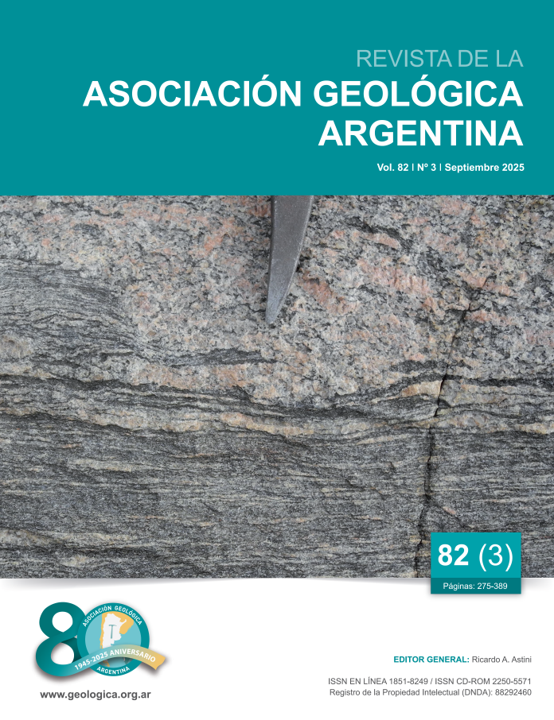Geoenvironmental assessment of the Ctalamochita fluvial system, Córdoba, Argentina.
Main Article Content
Abstract
Geoenvironmental analysis is based on planetary transformation processes and involves human beings as agents. In the Central Fluvioeolic Plain (Córdoba, Argentina) there are environmental problems by changes in soil use. The objective is to analyze rural and periurban geopedological environments. The Cenozoic sedimentation of the Ctalamochita River extends from the foothills of the Sierra Los Cóndores-Las Peñas in paleochannels covered by loess, controlled by compressional neotectonic deformations. Cartographic analyses and measurements enabled the identification of five representative geotaxa and pedotaxa at the Subfamily level. The Depression
Geotaxa with udic Haplustols, in the northeastern periurban area of Villa María, has problems of waterlogging, compaction and urbanization advancement over the agricultural sector. The Paleocauce Geotaxa with typical Natracualfs corresponds to relicts of native forest, vulnerable by the hydric dynamics, hydromorphism and halomorphism. Although the Ordinance declares some sectors
as a Protected Natural Reserve, it lacks a detailed management plan. The Manto Loéssico Geotaxa, interfluves with typical Haplus-tols, is stable to fluvial dynamics, but vulnerable to eolian and agroecosystemic intensification. The Floodplain Paleollanura Geotaxa with typical Haplustols evidences the advance of the agricultural frontier over the riparian forest. The Geotaxa Faja Fluvial with typical Ustipsamments, vulnerable to flooding and bank erosion, presents conflicts related to conservation and riparian boundary. The progressive pedogenesis: Entisols-Mollisols-Alfisols, base that relates processes and geoenvironmental degradation according to paleo and actual fluvioeolian dynamics, would allow legislating and verifying land use. Consequently, vulnerability depends on geopedological characteristics and socio-environmental problems.
Article Details

This work is licensed under a Creative Commons Attribution-NonCommercial 4.0 International License.
Nota de copyright
Los autores conservan los derechos de autor y garantizan a la revista el derecho de ser la primera publicación del trabajo licenciado según una licencia de atribución Creative Commons que permite a otros compartir el trabajo con el reconocimiento de la autoría y de la publicación en la que se publicó por primera vez.
Declaración de privacidad
Los nombres y direcciones de correo electrónico introducidos en esta revista se usarán exclusivamente para los fines declarados por esta revista y no estarán disponibles para ningún otro propósito u otra persona.

